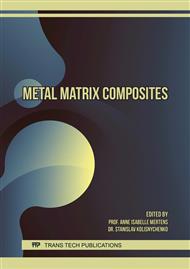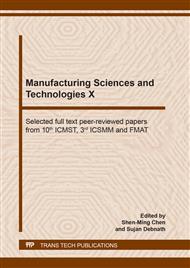p.129
p.139
p.147
p.154
p.163
p.169
p.178
p.185
p.191
Energy Consumption Prediction Model of SiCp/Al Composite in Grinding Based on PSO-BP Neural Network
Abstract:
As the typical particle-reinforced aluminum matrix composite, SiCp/Al composite has low density, high elastic modulus and high thermal conductivity, and is one of the most competitive metal matrix composites. Grinding is the main processing technique of SiCp/Al composite, energy consumption of the grinding process provides guidance for the energy saving, which is the aim of green manufacturing. In this paper, grinding experiments were designed and conducted to obtain the energy consumption of the grinding machine tool. The Particle Swarm Optimization (PSO) BP neural network prediction model was applied in the energy consumption prediction model of SiCp/Al composite in grinding. It showed that the Particle Swarm Optimization (PSO) BP neural network prediction model has high prediction accuracy. The prediction model of energy consumption based on PSO-BP neural network is helpful in energy saving, which contributes to greening manufacturing.
Info:
Periodical:
Pages:
163-168
Citation:
Online since:
June 2020
Authors:
Price:
Сopyright:
© 2020 Trans Tech Publications Ltd. All Rights Reserved
Share:
Citation:



